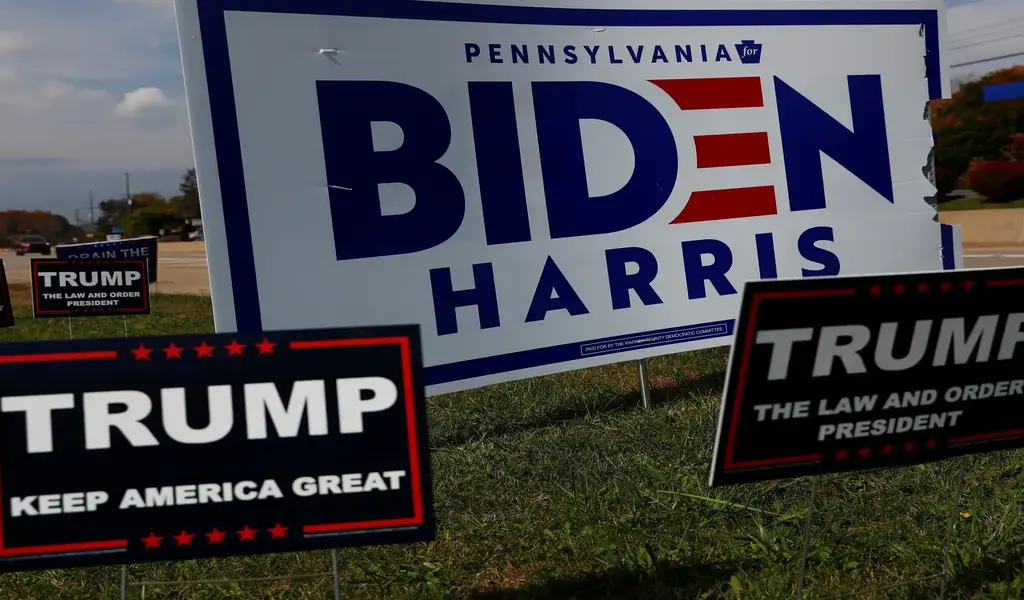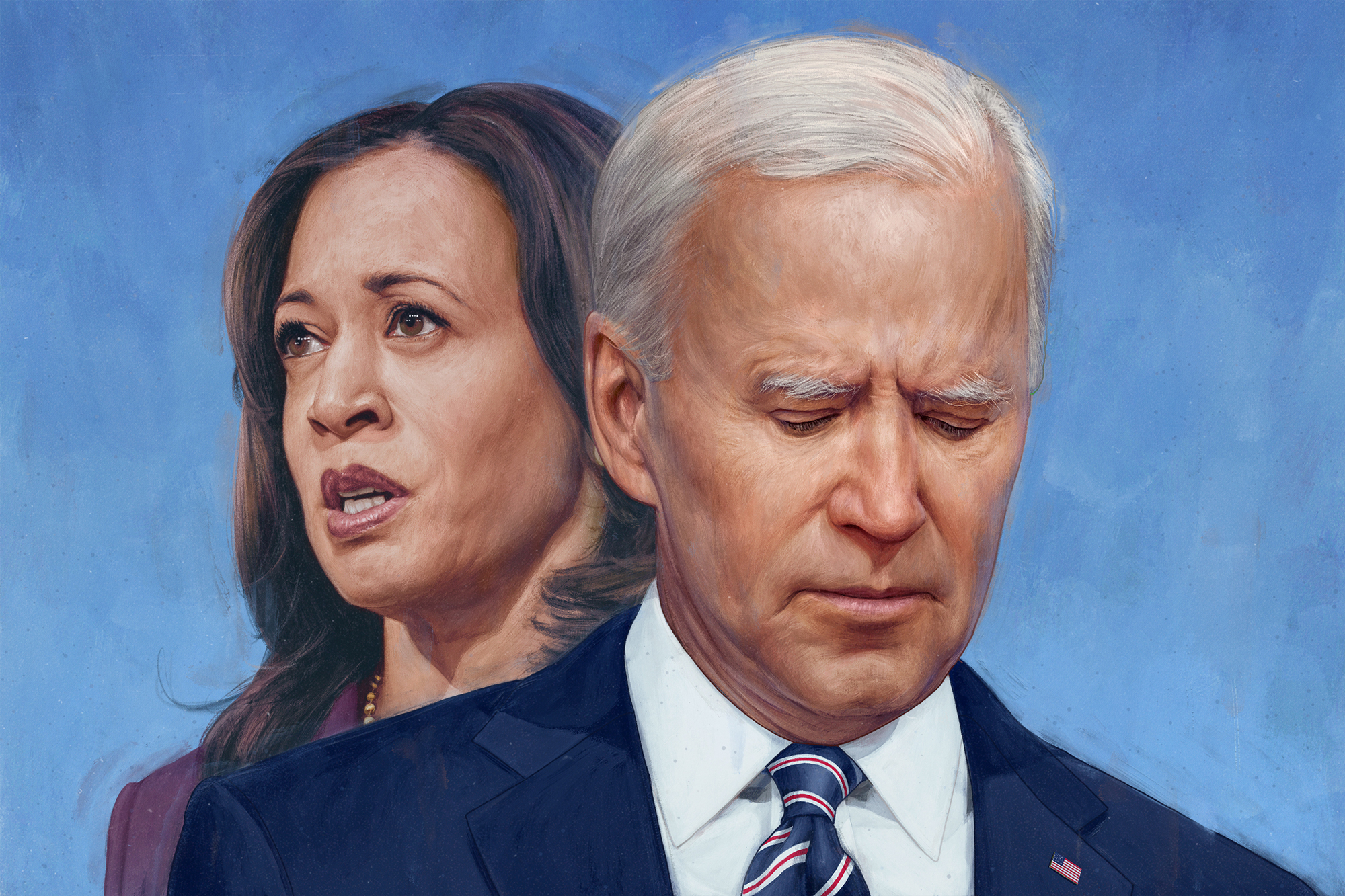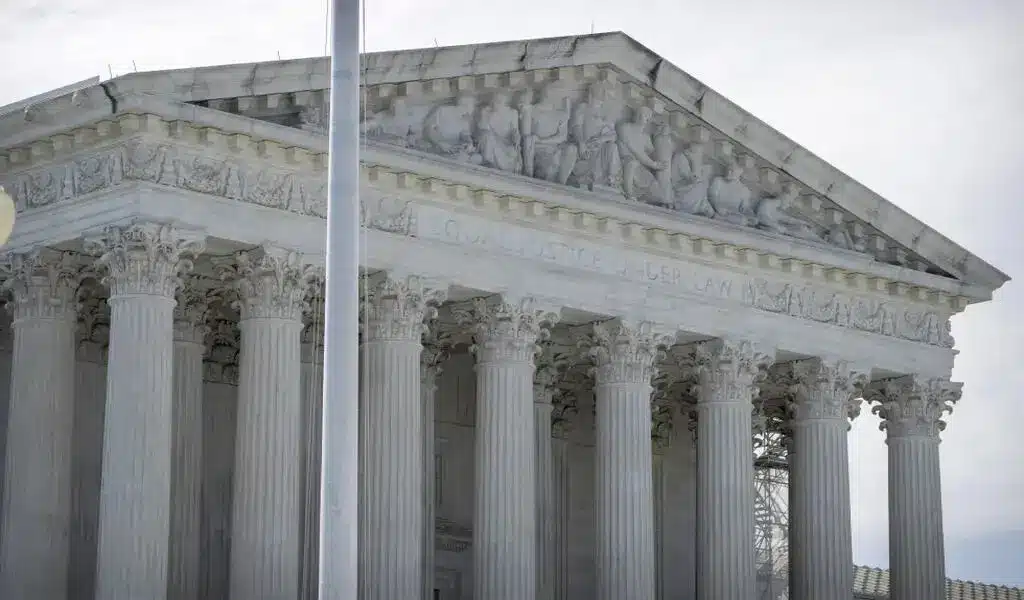News
Unity vs. Division: Assessing Public Perception Of President Joe Biden’s Identity Politics Approach

(CTN NEWS) – President Joe Biden’s initial campaign pledge to foster national unity, a significant portion of Americans now perceive his administration as exacerbating division through the lens of identity politics, according to recent polling data.
A remarkable 92% of surveyed Republicans expressed the view that Biden’s actions were contributing to a more fragmented nation. Conversely, 84% of Democrats believed his efforts were oriented towards unification.
Among the crucial independent voter demographic, which has held reservations about Biden, half concurred that his approach was leading to divisiveness.
Throughout his candidacy and subsequent victory, President Biden consistently underscored the importance of unity in his rhetoric.
This sentiment was reiterated in his inauguration speech and was recently reiterated when commemorating the tragic anniversary of the U.S. Capitol riot.
In his address, he articulated, “I firmly believe that the presidency’s essence and purpose lie in uniting our nation, fostering cohesion rather than fracture, and elevating the collective ‘us’ over individual ‘me’.”
He emphasized that the core principles of America—liberty, freedom, and equality—continue to burn as an enduring flame, a testament to the nation’s aversion to autocracy and the prevailing preference for order and peace over tumultuousness and violence.
As the second anniversary of the January 6 riot unfolded, a notable 53% of Americans harbored concerns about the potential recurrence of a similar incident in the future.

American Perspectives: Pervasive Concerns Amidst Political Polarization and Governance
In spite of Biden’s appeals for unity, a majority of Americans hold the belief that political polarization will continue to escalate throughout their lifetimes.
Additionally, over three-quarters of the population view domestic political instability as a more formidable threat than foreign adversaries.
The prevailing negative outlook among Americans extends beyond the realm of politics. The outlook on the economy remains predominantly unfavorable, as nearly half of the populace (46%) anticipates a deterioration in economic conditions within the coming year.
Furthermore, there has been a substantial upswing in the percentage of Americans who are skeptical about the nation’s ability to address its substantial challenges. This figure has risen from 41% in the previous year to 56% at present.
Doubts about the general public’s political acumen have become more pronounced among Americans.
Around three-quarters of the population (76%) now hold limited to no confidence in the intelligence of the American electorate when it comes to making political decisions, marking an increase from the 62% recorded in 2021.
A recent survey conducted by the Pew Research Center, encompassing 5,079 participants from the Center’s nationally representative American Trends Panel and conducted between March 27 and April 2, 2023, underscores Biden’s job approval rating, which remains below the 40% mark.
Out of those polled, merely 37% express approval for his job performance, while 60% register their disapproval.
Public Sentiment Regarding Progressive News Media’s Impact on Democracy and Political Divisions in the U.S.
Meanwhile, with regard to the influence of the progressive news media on democracy and the intensification of political divisions within the United States, a prevailing sentiment among Americans is that it is yielding more harm than benefit.
In a recent poll conducted by the Associated Press, nearly three-quarters of U.S. adults express the belief that the news media is contributing to the widening political divide within the nation.
Additionally, just below half of the respondents exhibit limited to no trust in the media’s capacity to deliver news in an impartial and truthful manner.
The survey underscores the apprehensions of Americans about the dissemination of misinformation and the roles played by media outlets, politicians, and social media platforms in amplifying it.
Simultaneously, the respondents express mounting concerns about the safety and security of journalists, indicating a complex mix of worries.
This erosion of confidence in traditional news sources might propel a significant number of Americans to turn towards social media platforms and less reliable websites that propagate false information, thereby cultivating echo chambers that reinforce partisan viewpoints, ultimately intensifying the polarization.
While a slim majority of respondents harbor some degree of confidence in the liberal news media’s ability to present news comprehensively and fairly, a mere 16% demonstrate a high level of confidence.
Nearly half, or 45%, admit to having limited to no confidence in the media’s future trajectory.
The poll’s findings illuminate the intricate rapport that Americans have with the media.
While a substantial majority acknowledge the value of in-depth investigative journalism in comprehending subjects of interest, they are more prone to scanning headlines rather than delving into detailed investigative pieces.
Amidst a general backdrop of diminished trust in the media, a majority of participants opine that media coverage of topics pertinent to them is at least somewhat satisfactory.

Divergent Views on Media’s Impact on Democracy and Society
A considerable proportion of individuals, approximately forty percent, perceive the press as contributing more harm than protection to American democracy, while a mere two in ten believe it serves as a safeguard.
An equivalent four in ten individuals express a stance that neither assertion applies.
Joe Salegna, a Republican hailing from Long Island, New York, attributes the intensification of this situation to partisan news outlets and social media platforms that have, in his opinion, nurtured a perspective among many Americans that casts fellow citizens as adversaries.
Salegna, aged 50, voiced his concerns to the Associated Press, stating, “I believe this is fracturing our nation. The situation has notably worsened since the 2016 election.”
Disparities in sentiment towards the news media are evident across party lines, with Republicans holding a more negative view than Democrats.
Specifically, 61% of Republicans believe the media is detrimental to democracy, compared to 23% of Democrats, while 36% of independents align with neither party.
A consensus spanning party affiliations emerges around the notion that the news media contributes to political divisions. However, Republicans are considerably more inclined than Democrats to perceive this as a frequent occurrence.
A heightened number of Republicans are of the opinion that news coverage is substantially influenced by the U.S. government and the political inclinations of journalists.
Janis Fort’s perspective on the media’s credibility has been shaped by its coverage of recent events such as presidential elections, the COVID-19 pandemic, and protests against police violence targeting Black Americans.
Fort asserts that different networks prioritize varying stories, leading viewers to feel uncertain about whom to trust.
Aged 71 and retired, Fort, a Republican residing in Navarre, Florida, contends that the media perpetuates fear and has left her and many she knows feeling uninformed and perplexed.
Unraveling the Impact of Media Proliferation on Polarization and Disinformation
Research indicates that the proliferation of the media landscape, largely propelled by the internet, has contributed to the deepening polarization within society.
Experts attribute the heightened political divisions in America to a range of factors, including gerrymandering, which erodes political competition, and the actions of politicians who sow fear and distrust.
However, media fragmentation and the dissemination of misinformation also constitute significant contributing factors to this phenomenon.
“We ought to be deeply concerned about the vitality of our democracy,” warned Joshua Tucker, a political scientist at New York University who specializes in partisanship and co-directs NYU’s Centre for Social Media.
The apprehension surrounding the menace posed by disinformation transcends party lines, with nearly ninety percent of U.S. adults voicing concerns about its prevalence.
Each day, a third of Americans encounter news containing dubious assertions by politicians or deceptive headlines.
Chris Nettell, a Democrat from Hickory Creek, Texas, expressed that while credible journalism still exists, the democratizing nature of the internet has enabled virtually anyone to assume the role of a “journalist.”
Nettell remarked, “Certain news outlets now exclusively cater to specific segments of society, and those individuals often accept these perspectives as universally held beliefs due to their limited exposure to differing viewpoints.”
Social media’s influential role in this context is undeniable, as nearly two-thirds of respondents anticipate encountering misleading news reports when they come across content on social media platforms.
Interestingly, those who regularly derive their news from social media are marginally more inclined to believe such content compared to others.
Public Perceptions of Media Responsibility and Press Freedom in the United States: Survey Insights
In general, approximately 60% of individuals attribute responsibility to the news media for the propagation of misinformation, and a similar proportion holds it accountable for actively addressing this issue.
A majority also places blame on other entities, including social media corporations and politicians, for both the dissemination and prevention of disinformation.
Araceli Cervantes, a 39-year-old Republican mother of four residing in Chicago, remarked, “Given that many individuals source their information from social media, people tend to endorse whatever aligns with their preexisting beliefs.”
Regarding the protection of press freedom in the United States, 44% of respondents express a favorable view of the government’s efforts, while 24% hold an unfavorable perspective.
The well-being of journalists is a prominent concern among most Americans, with nearly one-third indicating either high or extreme levels of worry regarding attacks on the press.
The survey, conducted from March 30 to April 3, encompassed 1,002 participants and utilized a sample extracted from NORC’s AmeriSpeak Panel, a probability-based selection intended to mirror the demographic makeup of the U.S. population.
The margin of sampling error for all respondents is 4.4 percentage points.
RELATED CTN NEWS:
China’s Fertility Rate Plummets To Unprecedented Lows: Fertility Landscape And Remedial Measures
Unveiling The Origin: The Genesis Of The Maui Fire And Suspicions Surrounding Hawaii’s Power Lines
Texan Woman Cecily Aguilar Receives 30-Year Prison Sentence For Role In Vanessa Guillén’s Case

News
Trudeau’s Gun Grab Could Cost Taxpayers a Whopping $7 Billion

A recent report indicates that since Trudeau’s announcement of his gun buyback program four years ago, almost none of the banned firearms have been surrendered.
The federal government plans to purchase 2,063 firearm models from retailers following the enactment of Bill C-21, which amends various Acts and introduces certain consequential changes related to firearms. It was granted royal assent on December 15 of last year.
This ban immediately criminalized the actions of federally-licensed firearms owners regarding the purchase, sale, transportation, importation, exportation, or use of hundreds of thousands of rifles and shotguns that were previously legal.
The gun ban focused on what it termed ‘assault-style weapons,’ which are, in reality, traditional semi-automatic rifles and shotguns that have enjoyed popularity among hunters and sport shooters for over a century.
In May 2020, the federal government enacted an Order-in-Council that prohibited 1,500 types of “assault-style” firearms and outlined specific components of the newly banned firearms. Property owners must adhere to the law by October 2023.
Trudeau’s Buyback Hasn’t Happened
“In the announcement regarding the ban, the prime minister stated that the government would seize the prohibited firearms, assuring that their lawful owners would be ‘grandfathered’ or compensated fairly.” “That hasn’t happened,” criminologist Gary Mauser told Rebel News.
Mauser projected expenses ranging from $2.6 billion to $6.7 billion. The figure reflects the compensation costs amounting to $756 million, as outlined by the Parliamentary Budget Office (PBO).
“The projected expenses for gathering the illegal firearms are estimated to range from $1.6 billion to $7 billion.” “This range estimate increases to between $2.647 billion and $7 billion when compensation costs to owners are factored in,” Mauser stated.
Figures requested by Conservative MP Shannon Stubbs concerning firearms prohibited due to the May 1, 2020 Order In Council reveal that $72 million has been allocated to the firearm “buyback” program, yet not a single firearm has been confiscated to date.
In a recent revelation, Public Safety Canada disclosed that the federal government allocated a staggering $41,094,556, as prompted by an order paper question from Conservative Senator Don Plett last September, yet yielded no tangible outcomes.
An internal memo from late 2019 revealed that the Liberals projected their politically motivated harassment would incur a cost of $1.8 billion.
Enforcement efforts Questioned
By December 2023, estimates from TheGunBlog.ca indicate that the Liberals and RCMP had incurred or were responsible for approximately $30 million in personnel expenses related to the enforcement efforts. The union representing the police service previously stated that the effort to confiscate firearms is a “misdirected effort” aimed at ensuring public safety.
“This action diverts crucial personnel, resources, and funding from tackling the more pressing and escalating issue of criminal use of illegal firearms,” stated the National Police Federation (NPF).
The Canadian Sporting Arms & Ammunition Association (CSAAA), representing firearms retailers, has stated it will have “zero involvement” in the confiscation of these firearms. Even Canada Post held back from providing assistance due to safety concerns.
The consultant previously assessed that retailers are sitting on almost $1 billion worth of inventory that cannot be sold or returned to suppliers because of the Order-In-Council.
“Despite the ongoing confusion surrounding the ban, after four years, we ought to be able to address one crucial question.” Has the prohibition enhanced safety for Canadians? Mauser asks.
Illegally Obtained Firearms are the Problem
Statistics Canada reports a 10% increase in firearm-related violent crime between 2020 and 2022, rising from 12,614 incidents to 13,937 incidents. In that timeframe, the incidence of firearm-related violent crime increased from 33.7 incidents per 100,000 population in 2021 to 36.7 incidents the subsequent year.
“This marks the highest rate documented since the collection of comparable data began in 2009,” the criminologist explains.
Supplementary DataData indicates that firearm homicides have risen since 2020. “The issue lies not with lawfully-held firearms,” Mauser stated.
Firearms that have been banned under the Order-in-Council continue to be securely stored in the safes of their lawful owners. The individuals underwent a thorough vetting process by the RCMP and are subject to nightly monitoring to ensure there are no infractions that could pose a risk to public safety.
“The firearms involved in homicides were seldom legally owned weapons wielded by their rightful owners,” Mauser continues. The number of offenses linked to organized crime has surged from 4,810 in 2016 to a staggering 13,056 in 2020.
“If those in power … aim to diminish crime and enhance public safety, they ought to implement strategies that effectively focus on offenders and utilize our limited tax resources judiciously to reach these objectives,” he stated.
Related News:
Millennials in Canada Have Turned their Backs on Justin Trudeau
Millennials in Canada Have Turned their Backs on Justin Trudeau
News
Google’s Search Dominance Is Unwinding, But Still Accounting 48% Search Revenue

Google is so closely associated with its key product that its name is a verb that signifies “search.” However, Google’s dominance in that sector is dwindling.
According to eMarketer, Google will lose control of the US search industry for the first time in decades next year.
Google will remain the dominant search player, accounting for 48% of American search advertising revenue. And, remarkably, Google is still increasing its sales in the field, despite being the dominating player in search since the early days of the George W. Bush administration. However, Amazon is growing at a quicker rate.
Google’s Search Dominance Is Unwinding
Amazon will hold over a quarter of US search ad dollars next year, rising to 27% by 2026, while Google will fall even more, according to eMarketer.
The Wall Street Journal was first to report on the forecast.
Lest you think you’ll have to switch to Bing or Yahoo, this isn’t the end of Google or anything really near.
Google is the fourth-most valued public firm in the world. Its market worth is $2.1 trillion, trailing just Apple, Microsoft, and the AI chip darling Nvidia. It also maintains its dominance in other industries, such as display advertisements, where it dominates alongside Facebook’s parent firm Meta, and video ads on YouTube.
To put those “other” firms in context, each is worth more than Delta Air Lines’ total market value. So, yeah, Google is not going anywhere.
Nonetheless, Google faces numerous dangers to its operations, particularly from antitrust regulators.
On Monday, a federal judge in San Francisco ruled that Google must open up its Google Play Store to competitors, dealing a significant blow to the firm in its long-running battle with Fortnite creator Epic Games. Google announced that it would appeal the verdict.
In August, a federal judge ruled that Google has an illegal monopoly on search. That verdict could lead to the dissolution of the company’s search operation. Another antitrust lawsuit filed last month accuses Google of abusing its dominance in the online advertising business.
Meanwhile, European regulators have compelled Google to follow tough new standards, which have resulted in multiple $1 billion-plus fines.

Pixa Bay
Google’s Search Dominance Is Unwinding
On top of that, the marketplace is becoming more difficult on its own.
TikTok, the fastest-growing social network, is expanding into the search market. And Amazon has accomplished something few other digital titans have done to date: it has established a habit.
When you want to buy anything, you usually go to Amazon, not Google. Amazon then buys adverts to push companies’ products to the top of your search results, increasing sales and earning Amazon a greater portion of the revenue. According to eMarketer, it is expected to generate $27.8 billion in search revenue in the United States next year, trailing only Google’s $62.9 billion total.
And then there’s AI, the technology that (supposedly) will change everything.
Why search in stilted language for “kendall jenner why bad bunny breakup” or “police moving violation driver rights no stop sign” when you can just ask OpenAI’s ChatGPT, “What’s going on with Kendall Jenner and Bad Bunny?” in “I need help fighting a moving violation involving a stop sign that wasn’t visible.” Google is working on exactly this technology with its Gemini product, but its success is far from guaranteed, especially with Apple collaborating with OpenAI and other businesses rapidly joining the market.
A Google spokeswoman referred to a blog post from last week in which the company unveiled ads in its AI overviews (the AI-generated text that appears at the top of search results). It’s Google’s way of expressing its ability to profit on a changing marketplace while retaining its business, even as its consumers steadily transition to ask-and-answer AI and away from search.

Google has long used a single catchphrase to defend itself against opponents who claim it is a monopoly abusing its power: competition is only a click away. Until recently, that seemed comically obtuse. Really? We are going to switch to Bing? Or Duck Duck Go? Give me a break.
But today, it feels more like reality.
Google is in no danger of disappearing. However, every highly dominating company faces some type of reckoning over time. GE, a Dow mainstay for more than a century, was broken up last year and is now a shell of its previous dominance. Sears declared bankruptcy in 2022 and is virtually out of business. US Steel, long the foundation of American manufacturing, is attempting to sell itself to a Japanese corporation.
SOURCE | CNN
News
The Supreme Court Turns Down Biden’s Government Appeal in a Texas Emergency Abortion Matter.

(VOR News) – A ruling that prohibits emergency abortions that contravene the Supreme Court law in the state of Texas, which has one of the most stringent abortion restrictions in the country, has been upheld by the Supreme Court of the United States. The United States Supreme Court upheld this decision.
The justices did not provide any specifics regarding the underlying reasons for their decision to uphold an order from a lower court that declared hospitals cannot be legally obligated to administer abortions if doing so would violate the law in the state of Texas.
Institutions are not required to perform abortions, as stipulated in the decree. The common populace did not investigate any opposing viewpoints. The decision was made just weeks before a presidential election that brought abortion to the forefront of the political agenda.
This decision follows the 2022 Supreme Court ruling that ended abortion nationwide.
In response to a request from the administration of Vice President Joe Biden to overturn the lower court’s decision, the justices expressed their disapproval.
The government contends that hospitals are obligated to perform abortions in compliance with federal legislation when the health or life of an expectant patient is in an exceedingly precarious condition.
This is the case in regions where the procedure is prohibited. The difficulty hospitals in Texas and other states are experiencing in determining whether or not routine care could be in violation of stringent state laws that prohibit abortion has resulted in an increase in the number of complaints concerning pregnant women who are experiencing medical distress being turned away from emergency rooms.
The administration cited the Supreme Court’s ruling in a case that bore a striking resemblance to the one that was presented to it in Idaho at the beginning of the year. The justices took a limited decision in that case to allow the continuation of emergency abortions without interruption while a lawsuit was still being heard.
In contrast, Texas has been a vocal proponent of the injunction’s continued enforcement. Texas has argued that its circumstances are distinct from those of Idaho, as the state does have an exemption for situations that pose a significant hazard to the health of an expectant patient.
According to the state, the discrepancy is the result of this exemption. The state of Idaho had a provision that safeguarded a woman’s life when the issue was first broached; however, it did not include protection for her health.
Certified medical practitioners are not obligated to wait until a woman’s life is in imminent peril before they are legally permitted to perform an abortion, as determined by the state supreme court.
The state of Texas highlighted this to the Supreme Court.
Nevertheless, medical professionals have criticized the Texas statute as being perilously ambiguous, and a medical board has declined to provide a list of all the disorders that are eligible for an exception. Furthermore, the statute has been criticized for its hazardous ambiguity.
For an extended period, termination of pregnancies has been a standard procedure in medical treatment for individuals who have been experiencing significant issues. It is implemented in this manner to prevent catastrophic outcomes, such as sepsis, organ failure, and other severe scenarios.
Nevertheless, medical professionals and hospitals in Texas and other states with strict abortion laws have noted that it is uncertain whether or not these terminations could be in violation of abortion prohibitions that include the possibility of a prison sentence. This is the case in regions where abortion prohibitions are exceedingly restrictive.
Following the Supreme Court’s decision to overturn Roe v. Wade, which resulted in restrictions on the rights of women to have abortions in several Republican-ruled states, the Texas case was revisited in 2022.
As per the orders that were disclosed by the administration of Vice President Joe Biden, hospitals are still required to provide abortions in cases that are classified as dire emergency.
As stipulated in a piece of health care legislation, the majority of hospitals are obligated to provide medical assistance to patients who are experiencing medical distress. This is in accordance with the law.
The state of Texas maintained that hospitals should not be obligated to provide abortions throughout the litigation, as doing so would violate the state’s constitutional prohibition on abortions. In its January judgment, the 5th United States Circuit Court of Appeals concurred with the state and acknowledged that the administration had exceeded its authority.
SOURCE: AP
SEE ALSO:
Could Last-Minute Surprises Derail Kamala Harris’ Campaign? “Nostradamus” Explains the US Poll.
-

 News3 years ago
News3 years agoLet’s Know About Ultra High Net Worth Individual
-
Entertainment2 years ago
Mabelle Prior: The Voice of Hope, Resilience, and Diversity Inspiring Generations
-

 Health4 years ago
Health4 years agoHow Much Ivermectin Should You Take?
-

 Tech2 years ago
Tech2 years agoTop Forex Brokers of 2023: Reviews and Analysis for Successful Trading
-

 Lifestyles3 years ago
Lifestyles3 years agoAries Soulmate Signs
-

 Movies2 years ago
Movies2 years agoWhat Should I Do If Disney Plus Keeps Logging Me Out of TV?
-

 Health3 years ago
Health3 years agoCan I Buy Ivermectin Without A Prescription in the USA?
-

 Learning3 years ago
Learning3 years agoVirtual Numbers: What Are They For?
